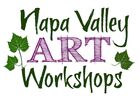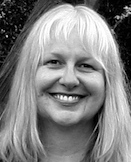|
by Karen Lynn Ingalls A week ago last Saturday, a fire — later named the Valley Fire — started in Lake County, on the other side of Mt. St. Helena from where I live. It jumped from 40 acres to 1,000 acres in less than an hour, and continued to spread far faster than anyone could have imagined, sending over 17,000 residents running for their lives, including friends, acquaintances, and current and former students of mine. Like so many others, I searched online, hoping and praying, to hear whether they had made it out safely, whether they had been able to take their pets with them, and whether they had any idea if their homes had been spared. That first night, the sky glowed red above and behind Mt. St. Helena. It was both beautiful and terrifying. My neighbor suggested we write lists of all the important things you need, so we wouldn't miss anything if we had short notice to pack up the car. But we were lucky; the fire didn't come down our side of the mountain. On the internet, people had posted terrifying photos and videos of apocalyptic scenes, of driving down roads with fires burning on either side, of tall tongues of flame leaping into the sky as gas or propane tanks exploded, of trees becoming tall, tall torches, and of darkened skies thick with soot and smoke and burning embers. Then, on Tuesday, I drove to the de Young Museum in San Francisco, to see the Turner show (J.M.W. Turner: Painting Set Free) before it closed. Born in 1775, Joseph Mallord William Turner was one of the greatest English painters of the 19th century. Whether art historians agree with me or not, I think of him as the first abstract painter. Although he painted scenes and events, current, historical, and mythological, the scenes and events often seem simply a reason to paint light and storm and fog and fire.... And there, in the first gallery past the entrance, was a wall of paintings of fire. Turner didn't have a camera or an iPhone to record the terrifying fires of his time; he had only his watercolor paints and paper. The description of these three watercolor sketches said that the fire, which began October 30, 1841, burned for several days, and that most likely Turner sketched these on the other side of the moat, standing in the enormous crowds that had gathered. Just down the wall a bit from Turner's watercolors of that fire was an oil painting of another fire, that of the Houses of Lords and Commons in 1834. Here, the flames rise high into the night, with an intensity of light and thick clouds of smoke. Crowds gather on the near shore, unable to stop it, able only to witness the fury of the inferno.  Detail of The Burning of the Houses of Lords and Commons, 16th October, 1834 • oil paint on canvas • J.M.W. Turner • photo courtesy of Linda Huffman. I have saturated the colors here a little, to try to envision what the intensity and color may have originally looked like when Turner first painted it. Turner's colors have faded considerably since he painted these, so I saturated the image above to see something of what they might have originally looked like. It reminds me of the apocalyptic videos I watched online, and the photos of the raging flames. Like the crowds gathered in Turner's painting, we too stood and watched. I don't know how many others thought of those horrific images from the Valley Fire as they looked at these paintings. I did, and I thought of the ghastly power and ferocious speed and damage of the blaze. Just like the witnesses Turner painted, we witnessed the devastation he recorded in the painting, and we witnessed the devastation of this week's fire in photographs and videos. But some people saw it firsthand as they ran to their cars and drove to safety; or as they warned residents to leave, saving those residents' lives, and as they fought the fire so valiantly. I've been learning, as each day goes by, who among my friends has a home to return to, and who does not. I brought donations on the first Sunday morning for the evacuees, and though it was little in the scale of things, every little thing adds up. Our friends and neighbors have been devastated, and need our prayers, our thoughtfulness, our kindness, our generosity, and our help. There but for fortune, it could have been any of us. To donate items to the evacuees who are now returning to Lake County, you can follow this link to find where to take donations: http://www.lakecountylac.com/donation-centers.html To give a gift of money, there are a number of organizations you can contact, including Redwood Credit Union, who will ensure that 100% of donations will make it directly to victims of the Lake County fires. https://www.redwoodcu.org/about-rcu/news-announcements-specials/rockyfire My thanks to Santa Cruz artist Linda Huffman, who took photographs of the exhibit and shared them with me for this blog post.
1 Comment
Leave a Reply. |
Karen Lynn IngallsI am a working artist in Napa and Sonoma Counties, in northern California. I paint colorist landscapes of rural California, teach art classes, workshops, and private lessons, live in Calistoga, and have my art studio in Santa Rosa, California. Archives
December 2023
Categories
All
|









 RSS Feed
RSS Feed

